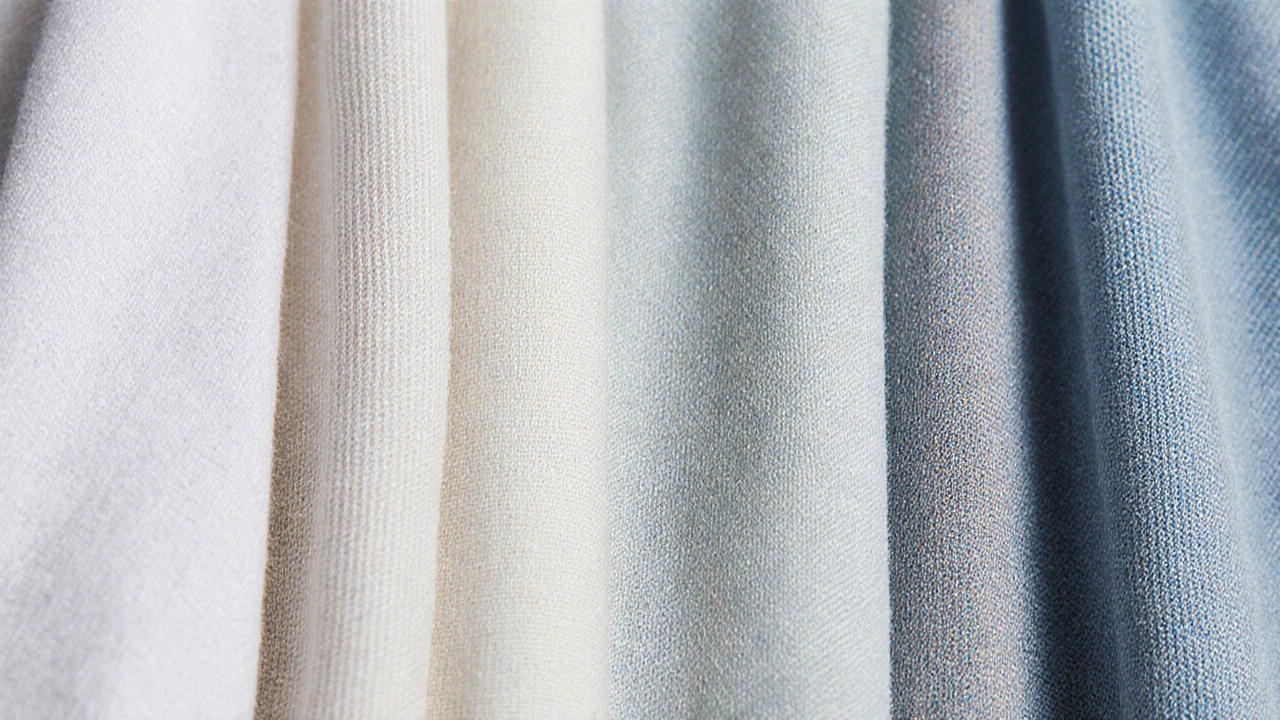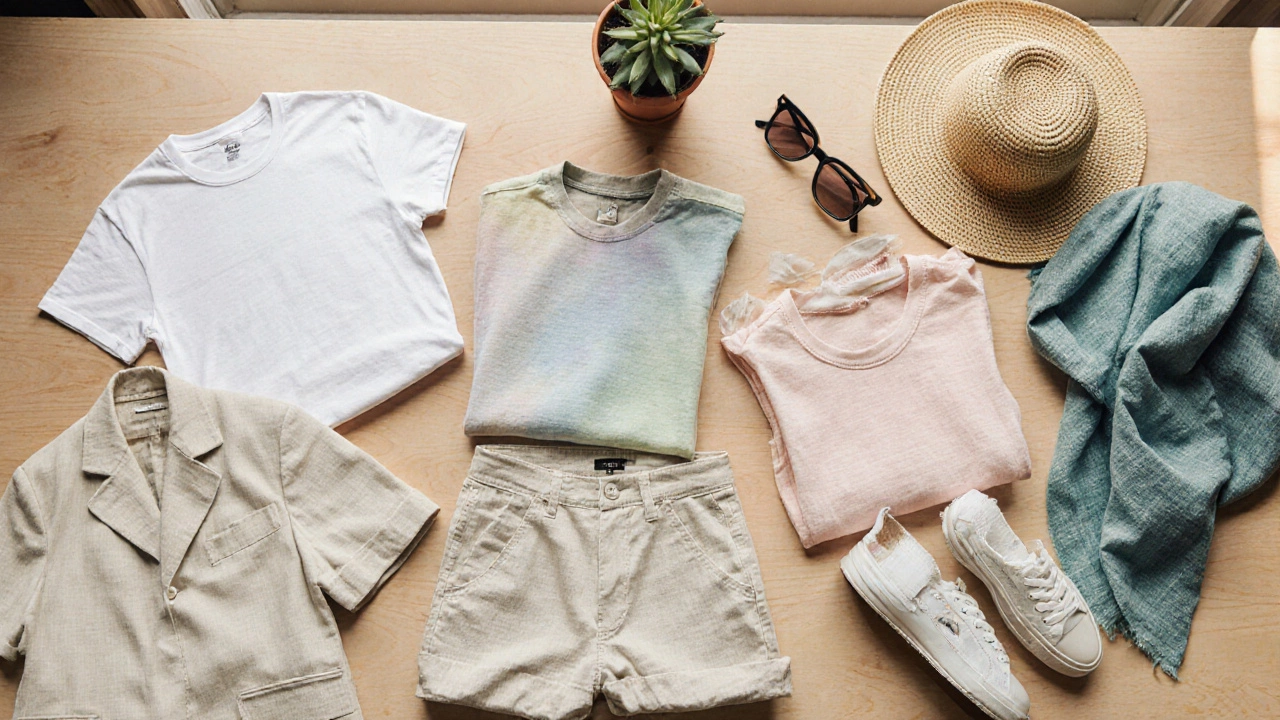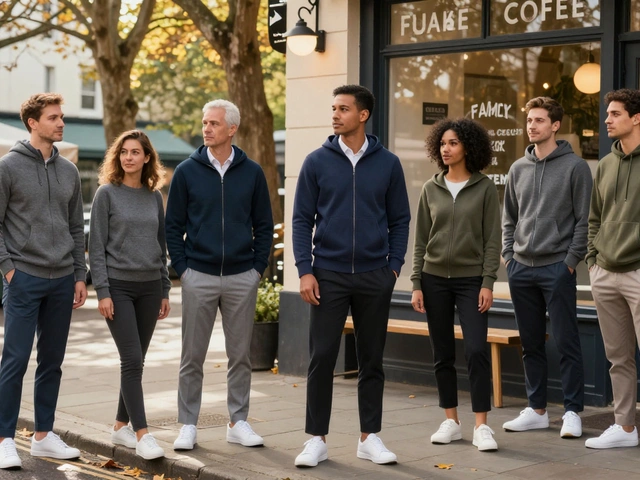How to Dress Cool When You Get Hot Easily - Simple Summer Fashion Tips

- Cleo Fairchild
- 8 October 2025
- 0 Comments
Summer Fashion Coolness Calculator
Your Summer Outfit Rating
When you dress for hot weather, the core piece to focus on is cool clothing - garments designed to keep your body temperature regulated by using breathable fabrics, strategic cuts, and heat‑reflecting colors. If you’ve ever felt a wave of heat after just a few minutes in a meeting or a stroll outside, the right wardrobe can be a game‑changer.
Key Takeaways
- Choose natural, breathable fabrics like cotton, linen, or bamboo for everyday comfort.
- Light colors and loose fits reflect heat and promote airflow.
- Layer smartly with lightweight pieces that can be added or removed.
- Use accessories-wide‑brim hats, UV‑blocking sunglasses, and breathable shoes-to finish the look.
- Build a capsule wardrobe of versatile, cooling pieces to simplify daily decisions.
Why Some People Feel Hot Faster
Everyone’s heat tolerance is a mix of genetics, metabolism, and external conditions. Two big factors are the heat index-the combination of temperature and humidity that makes it feel hotter-and personal thermoregulation, the body’s ability to sweat and circulate blood. If you sweat heavily or have a high basal metabolic rate, you’ll notice discomfort sooner. The goal of cool clothing is to aid that natural cooling process rather than fight against it.
Pick the Right Fabrics
Fabric choice is the single most influential decision for staying comfortable.
| Fabric | Breathability | Moisture Management | Weight (g/m²) | Best Use |
|---|---|---|---|---|
| Cotton - soft natural fiber with high breathability | High | Good (absorbs, dries slowly) | 150‑180 | Casual shirts, t‑tees, lightweight dresses |
| Linen - flax‑derived fabric known for its airy texture | Very High | Excellent (quick‑dry) | 120‑160 | Pants, shirts, summer suits |
| Bamboo - eco‑friendly fiber with natural moisture‑wicking | High | Excellent (anti‑odor) | 130‑170 | Undershirts, active wear |
| Moisture‑Wicking Synthetic - engineered polyester or nylon blends that pull sweat away from skin | Medium‑High | Outstanding (fast‑dry) | 90‑130 | Sportswear, travel tops |
| Merino Wool - fine wool that regulates temperature and resists odor | Medium | Very Good (absorbs moisture, stays warm when cool) | 150‑200 | Light sweaters, layered pieces |
For everyday city life, a blend of cotton and linen works wonders. When you’re on the move-traveling, cycling, or hitting the gym-consider moisture‑wicking synthetics or bamboo for that extra sweat‑pull.
Color Matters More Than You Think
Light colors such as whites, pastels, and soft neutrals reflect sunlight, keeping the garment cooler. Dark shades absorb heat, which can raise skin temperature by several degrees in direct sun. This doesn’t mean you have to ditch your favorite navy shirt; pair it with a light‑colored outer layer or wear it in shaded indoor environments.
For a style boost, try subtle patterns like thin stripes or micro‑prints that break up the surface without adding visual weight.

Fit and Cut: Let Air Flow
Loose, draped silhouettes allow air to circulate naturally. Think relaxed‑fit tees, A‑line dresses, and tapered yet breathable trousers. Avoid clingy cuts that trap heat against the skin.
Strategic ventilation-mesh panels, side slits, or breathable back panels-adds a sporty edge while staying functional.
Smart Layering for Hot Days
Layering isn’t just for winter. A lightweight, breathable cardigan or unlined blazer can be slipped on for air‑conditioned offices and removed outdoors without looking sloppy. Choose pieces with minimal lining (or no lining at all) and opt for breathable seams.
Accessories That Keep You Cool
Accessories can dramatically influence heat perception.
- Wide‑brim hat - shades the face and reduces head temperature
- UV‑blocking sunglasses - shield eyes from glare and prevent radiative heat
- Breathable footwear - canvas sneakers, woven sandals, or shoes with ventilation holes
- Lightweight scarves made of linen or silk that can be draped for style and used to wipe sweat.
Building a Heat‑Friendly Capsule Wardrobe
Instead of hunting for a new outfit every morning, create a curated set of interchangeable pieces.
- Two basic tees in white and pastel tones (cotton or bamboo).
- One linen button‑down for a smarter look.
- Two pairs of loose‑fit trousers-one in lightweight denim, one in breathable chinos.
- A breezy A‑line dress or jumpsuit for days you want a one‑piece solution.
- A lightweight cardigan or unlined blazer for indoor cooling.
- Essential accessories: hat, sunglasses, breathable shoes.
Mix and match these items to create at least ten outfit variations without feeling overheated.

Quick Outfit Checklist for Hot Days
- Fabric: natural fiber or moisture‑wicking synthetic?
- Color: light‑reflective?
- Fit: loose enough to let air flow?
- Accessories: hat and sunglasses on hand?
- Layering: a breathable outer layer ready for indoor climates?
Common Mistakes and How to Avoid Them
Mistake 1: Relying on heavy fabrics like thick denim or plush knits. Fix: Swap for a cotton‑linen blend or a lightweight woven tee.
Mistake 2: Wearing dark colors all day. Fix: Incorporate at least one light‑colored piece per outfit.
Mistake 3: Tight, restrictive cuts that trap heat. Fix: Choose relaxed or slightly oversized silhouettes.
Mistake 4: Ignoring accessories. Fix: Keep a hat and sunglasses in your bag for quick sun protection.
Season‑Specific Tips
Even within the UK, summer can swing from mild to sweltering. In cooler breezy days, a light cardigan over a linen shirt works well. On heatwave days, go full‑on breathable: a sleeveless bamboo top with linen shorts.
Frequently Asked Questions
Can synthetic fabrics be comfortable in hot weather?
Yes, especially engineered moisture‑wicking synthetics like polyester blends. They pull sweat away from the skin and dry quickly, preventing that sticky feeling that cotton sometimes gives when it becomes saturated.
Is linen really worth the wrinkles?
If you value comfort over a perfectly smooth look, absolutely. Linen’s breathability outweighs the need for constant ironing. A few casual rolls are even part of its charm.
What’s the best hat for staying cool?
A wide‑brim hat made of straw or breathable canvas provides shade and allows airflow. Look for designs with ventilation holes or mesh linings for extra breathability.
How many layers should I wear indoors when it’s hot outside?
Usually one light layer is enough. A thin, unlined cardigan or a breathable shirt over a tee lets you adjust quickly when you move between air‑conditioned spaces and the street.
Do I need to change my shoes for hot weather?
Switching to canvas sneakers, breathable sandals, or shoes with mesh panels helps keep your feet cooler and reduces sweat buildup, which also lessens odor.
By focusing on breathable fabrics, light colors, relaxed fits, and clever accessories, you’ll stay comfortable even when the temperature spikes. Remember, the goal isn’t to dress in a costume-it’s to choose pieces that work with your body’s natural cooling system. With a thoughtfully built wardrobe, feeling hot will become the exception, not the rule.


